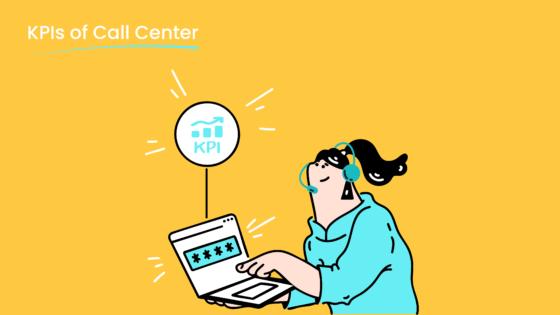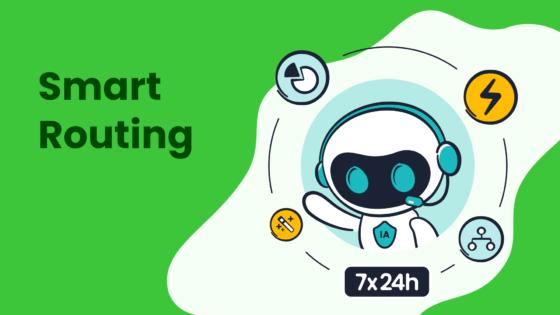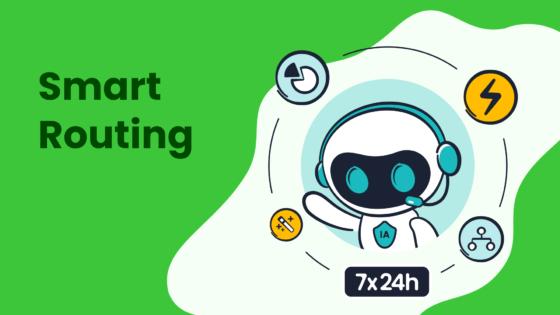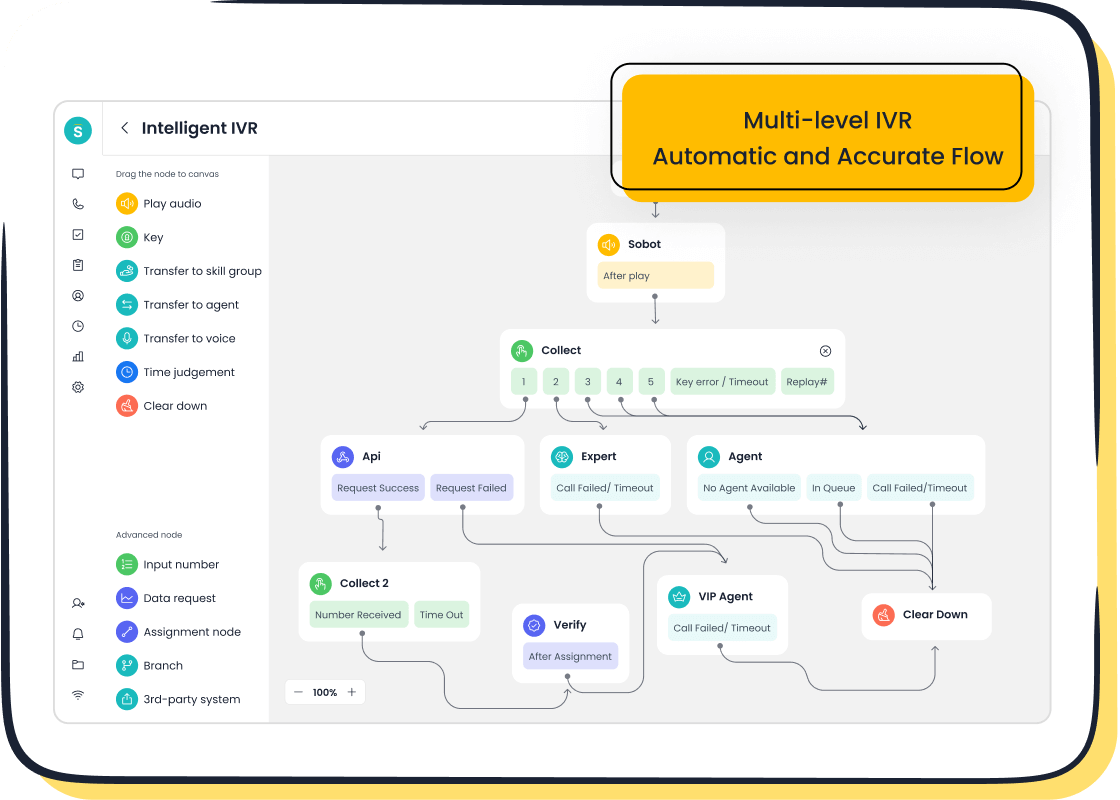Why Agent Utilization Rate is Critical in 2025

The agent utilization rate (AUR) plays a crucial role in call center operations. It measures how effectively agents use their paid hours, covering tasks like handling calls, after-call work, and training. AUR targets between 80-90% indicate optimal productivity. In 2025, advancements in AI and analytics are transforming call centers. These technologies enhance efficiency by personalizing customer interactions and improving resource management. However, 50% of managers report insufficient automation, and 86% of agents lack adequate tools. Solutions like Sobot’s Voice/Call Center address these gaps, ensuring better AUR optimization and operational success.
Understanding Agent Utilization Rate (AUR)
Definition and Formula
What does Agent Utilization Rate measure?
The agent utilization rate measures how effectively agents spend their working hours on productive tasks. It evaluates the balance between active time, such as handling calls or completing after-call work, and total paid time. This performance metric serves as a key performance indicator for call centers, helping you understand how well resources are being utilized. A high agent utilization rate reflects efficient use of time, while a low rate may indicate underutilization or inefficiencies. By monitoring this indicator, you can identify areas for improvement and align operations with customer expectations in 2025.
How is Agent Utilization Rate calculated?
The formula for calculating the agent utilization rate is straightforward:
Agent Utilization Rate = (Active Time ÷ Total Time) × 100
For example, if an agent spends 6 hours actively working during an 8-hour shift, the utilization rate would be:
(6 ÷ 8) × 100 = 75%
This efficiency measurement helps you track how much of an agent’s time is spent on tasks that directly contribute to customer service goals. Tools like Sobot’s Voice/Call Center simplify this process by providing real-time monitoring and analytics, ensuring accurate calculations and actionable insights.
Industry Standards for AUR
Typical benchmarks for call centers
In most call centers, the agent utilization rate typically falls between 80% and 90%. This range ensures a balance between productivity and agent well-being. Rates above 90% may lead to burnout, while rates below 80% could signal inefficiencies. For instance, a call center handling high call volumes during peak seasons might aim for the upper end of this range to meet demand. Monitoring this indicator allows you to maintain optimal performance without overburdening your team.
Variations across industries and call center sizes
Agent utilization rates can vary depending on the industry and the size of the call center. For example, financial services often require agents to handle complex queries, leading to slightly lower utilization rates. In contrast, retail call centers may achieve higher rates due to simpler, repetitive tasks. Smaller call centers might face challenges in maintaining high rates due to limited resources, while larger centers benefit from advanced tools like Sobot’s Voice/Call Center, which offers intelligent IVR and smart call routing to optimize agent time. Understanding these variations helps you set realistic targets tailored to your specific needs.
The Importance of Agent Utilization Rate for Call Center Efficiency and Agent Well-being

Enhancing Call Center Efficiency
Optimizing resource allocation
Optimizing the agent utilization rate allows you to allocate resources effectively. By analyzing how agents spend their time, you can identify inefficiencies and redistribute workloads. For example, if certain agents handle more calls than others, balancing tasks ensures fair distribution and maximizes productivity. Metrics like Cost Per Call (CPC) and First Call Resolution (FCR) highlight the impact of better resource allocation:
- Cost Per Call (CPC): Lower CPC reflects efficient resource use, reducing operational expenses.
- First Call Resolution (FCR): Higher FCR indicates fewer repeat calls, improving overall efficiency.

Sobot’s Voice/Call Center enhances resource allocation with features like smart call routing and real-time monitoring. These tools ensure agents focus on tasks that directly improve customer interactions.
Reducing operational costs
A well-optimized agent utilization rate reduces wasteful spending. By managing more interactions with fewer agents, you can lower costs without compromising service quality. Measuring call center efficiency through this metric helps you assess productivity and identify areas to cut unnecessary expenses. For instance, Sobot’s intelligent IVR system automates routine tasks, allowing agents to concentrate on complex issues. This approach minimizes idle time and maximizes efficiency.
Supporting Agent Well-being
Preventing overwork and burnout
Maintaining a balanced agent utilization rate is essential for agent burnout prevention. Overloading agents with tasks can lead to stress and reduced performance. By setting realistic utilization targets, you create a healthier work environment. Tools like Sobot’s real-time monitoring help you track workloads and adjust schedules to prevent overwork.
Promoting job satisfaction and retention
Agents who feel valued and supported are more likely to stay with your company. A balanced workload promotes job satisfaction, leading to higher retention rates. Providing agents with the right tools, such as Sobot’s unified workspace, simplifies their tasks and boosts morale. Happy agents deliver better customer service, creating a positive cycle of satisfaction.
Improving Customer Experience
Ensuring timely responses
An optimized agent utilization rate ensures customers receive prompt assistance. When agents manage their time effectively, they can handle inquiries faster, reducing wait times. Sobot’s smart call routing directs calls to the most suitable agents, ensuring timely and accurate responses.
Maintaining service quality
High service quality depends on agents having the capacity to focus on customer needs. Overburdened agents may rush through interactions, leading to errors. By balancing workloads, you maintain consistent service standards. Sobot’s AI-powered Voicebot supports agents by handling repetitive tasks, allowing them to concentrate on delivering exceptional customer experiences.
Factors Influencing Agent Utilization Rate
Call Volume and Patterns
Seasonal fluctuations
Call volume often fluctuates based on seasonal trends. For example, retail call centers experience higher demand during holidays like Black Friday or Christmas. These spikes can strain resources, leading to inefficiencies in the agent utilization rate. Adjusting schedules to match these patterns ensures agents are neither overburdened nor underutilized.
| Factor | Description |
|---|---|
| Call volume and distribution | Variations in the number of incoming calls can affect how agents are utilized. |
| Average handling time | The time taken to resolve calls impacts overall efficiency. |
| Scheduling and shift patterns | Adjusting agent schedules based on call volume trends can optimize utilization. |
Sobot’s Voice/Call Center offers real-time monitoring and analytics, helping you predict seasonal trends and optimize schedules for an optimal agent occupancy rate.
Unexpected spikes in demand
Unplanned events, such as product recalls or system outages, can cause sudden increases in call volume. These spikes disrupt the agent occupancy rate, leading to longer wait times and reduced customer satisfaction. Tools like Sobot’s smart call routing distribute calls efficiently, ensuring agents handle the surge effectively without compromising service quality.
Technology and Tools
Role of automation and AI
Modern technology plays a crucial role in improving the agent utilization rate. Automation tools handle repetitive tasks, freeing agents to focus on complex issues. AI-powered solutions, like Sobot’s Voice/Call Center, enhance efficiency by providing real-time data analytics and intelligent call routing.
- Enhanced Data Analytics: Tracks metrics like call volume and customer satisfaction.
- Improved Operational Efficiency: Automates routine tasks, allowing agents to focus on strategic activities.
- Strategic Decision Making: Provides data-driven insights for better resource allocation.
These advancements ensure agents work smarter, not harder, improving both productivity and customer experience.

Impact of outdated systems
Outdated systems hinder efficiency and negatively impact the agent occupancy rate. Slow interfaces and limited integration capabilities waste valuable time, reducing overall productivity. Upgrading to modern platforms like Sobot’s ensures seamless operations, enabling agents to deliver high-quality service consistently.
Agent Training and Skill Levels
Importance of onboarding and continuous training
Effective onboarding and ongoing training are critical factors affecting agent occupancy rate. Proper training equips agents with the skills needed to resolve issues efficiently, reducing abandonment rates and improving customer satisfaction.
- High abandonment rates often indicate gaps in training.
- 45% of consumers prefer issue resolution in the first interaction, highlighting the need for skilled agents.
Sobot’s unified workspace simplifies agent tasks, making it easier for new hires to adapt quickly and perform effectively.
How skill gaps affect utilization
Skill gaps directly impact the agent utilization rate. Agents lacking the necessary expertise take longer to resolve issues, leading to inefficiencies. Continuous training programs address these gaps, ensuring agents remain productive and confident in their roles. Sobot’s AI-powered tools assist by providing real-time guidance, helping agents improve their performance and maintain an optimal agent occupancy rate.
Strategies to Optimize Agent Utilization Rate

Leveraging Workforce Management Tools
Scheduling and forecasting software
Workforce management tools play a vital role in optimizing agent utilization rate. Scheduling and forecasting software helps you predict call volumes and align staffing accordingly. For example, companies like Salesforce have reported up to a 15% improvement in agent occupancy rate by using AI-powered forecasting tools. These systems analyze historical data to anticipate peak times, ensuring you have the right number of agents available. This approach minimizes idle time and prevents overstaffing, which directly enhances efficiency. Sobot’s Voice/Call Center integrates seamlessly with such tools, offering real-time insights to help you make data-driven decisions.
Real-time monitoring and adjustments
Real-time monitoring allows you to track agent occupancy rate and make immediate adjustments. For instance, if call volumes spike unexpectedly, you can reassign agents or adjust schedules to maintain service levels. This flexibility ensures that agents remain productive without being overburdened. Sobot’s platform provides real-time analytics, enabling you to monitor performance metrics like adherence to schedule and occupancy rates. These insights help you respond proactively to changing conditions, ensuring consistent efficiency and customer satisfaction.
Training and Development
Enhancing agent skills for efficiency
Continuous training is essential for improving agent productivity. Well-trained agents handle calls more efficiently, reducing average handling time and improving first-call resolution rates. Studies show that skill development programs can significantly enhance agent occupancy rate by equipping agents to manage complex tasks effectively. Sobot’s unified workspace simplifies workflows, allowing agents to focus on delivering high-quality service. By investing in training, you not only optimize agent utilization rate but also improve overall customer experience.
Providing stress management resources
Stress management resources are critical for maintaining a healthy work environment. High agent occupancy rates can lead to burnout if not managed carefully. Offering stress-relief programs, such as mindfulness training or access to wellness apps, helps agents stay focused and motivated. Flexible scheduling options, like those supported by Sobot’s workforce management tools, also contribute to reducing stress by accommodating personal preferences. A balanced approach to workload management ensures agents remain engaged and productive.
Balancing Workloads
Avoiding over-scheduling
Over-scheduling agents can lead to fatigue and decreased performance. Maintaining an agent occupancy rate between 80-90% ensures a balance between productivity and well-being. Companies like USAA achieve this by prioritizing employee satisfaction while maintaining high utilization rates. Sobot’s smart call routing evenly distributes calls among agents, preventing overwork and ensuring consistent performance.
Implementing flexible work arrangements
Flexible work arrangements improve both agent satisfaction and efficiency. Options like split shifts or adjustable start times align staffing with call volume patterns, enhancing agent occupancy rate. Allowing agents to swap shifts or volunteer for overtime gives them greater control over their schedules. Research shows that such flexibility reduces burnout and increases job satisfaction. Sobot’s Voice/Call Center supports these strategies by offering tools that simplify scheduling and enable real-time adjustments.
Using Sobot's Voice/Call Center for Optimization

Intelligent IVR and smart call routing
Sobot's Voice/Call Center uses intelligent IVR and smart call routing to optimize your agent utilization rate. These features ensure that every customer call reaches the right agent or department without unnecessary delays. By automating routine tasks, such as directing inquiries or providing basic information, the system reduces inbound discussion volume by 20%. This allows your agents to focus on more complex issues, improving efficiency and customer satisfaction.
Smart call routing also enhances the customer experience by matching calls to agents based on skills, availability, or priority. For example, if a customer has a billing issue, the system routes the call to an agent trained in financial queries. This targeted approach increases the accuracy of responses, with Sobot's AI platform delivering correct answers 80% of the time.
Here’s how Sobot's intelligent IVR and smart routing impact key metrics:
| Metric | Result |
|---|---|
| Reduction in inbound discussion volume | 20% |
| Increase in positive feedback | 96% + |
| Correct answers provided by AI platform | 80% |
| Customer satisfaction rate | 95% |
| Self-service question resolution | 22.2% |
| Customer satisfaction score (CSAT) | 97% |
| Increase in sign-off rate | 35% |
| Increase in COD collection rate | 40% |

These results demonstrate how Sobot's tools streamline operations while boosting customer satisfaction.
Real-time monitoring and analytics

Real-time monitoring and analytics from Sobot's Voice/Call Center provide actionable insights to improve your agent utilization rate. This feature tracks performance metrics like first-call resolution rates and average handle times, helping you identify inefficiencies and make immediate adjustments. For instance, if call volumes suddenly spike, you can reassign agents or adjust schedules to maintain service levels.
The impact of real-time analytics on performance is significant:
| Metric | Improvement |
|---|---|
| First-call resolution rates | 18% higher |
| Response time to changing conditions | 14% faster |
| Average handle times | Up to 40% reduction |
| Customer satisfaction scores | Improved |
Additionally, these tools enhance agent retention and performance. By providing data-driven feedback, you can support your team in achieving their goals.
| Metric | Improvement |
|---|---|
| Agent retention | 27% improvement |
| Agent performance metrics | 22% enhancement |
| New agent ramp-up time | 35% improvement |
Sobot's real-time analytics empower you to make informed decisions, ensuring your call center operates at peak efficiency while maintaining high service quality.
Balancing High Utilization with Service Quality and Employee Satisfaction
Risks of Over-Utilization
Agent burnout and turnover
High agent occupancy rates, especially those exceeding 90%, often lead to stress and fatigue. This continuous pressure increases the likelihood of burnout, which directly impacts agent retention. Overworked agents may leave their roles, forcing you to spend more on hiring and training replacements.
- High occupancy metrics indicate overworked agents, raising burnout risks.
- Burnout contributes to higher turnover, escalating operational costs.
Maintaining a balanced agent occupancy rate helps you avoid these challenges, ensuring a healthier work environment.
Decline in service quality
Extremely high utilization rates can negatively affect service quality. Agents under constant strain may struggle to maintain focus, leading to longer handling times and errors. This decline in performance reduces customer satisfaction.
- High utilization nearing 100% often results in decreased call quality.
- Overworked agents deliver inconsistent service, harming customer experience.
Balancing utilization and quality ensures agents remain engaged and capable of meeting customer expectations.
Strategies for Balance
Setting realistic utilization targets
Establishing attainable benchmarks is essential for maintaining agent engagement. Companies like USAA achieve around 85% utilization by prioritizing employee satisfaction. Tailoring targets to your team’s dynamics, such as aiming for 75-85%, prevents exhaustion while optimizing productivity.
Salesforce clients using AI-powered forecasting tools report a 15% improvement in utilization. Tools like Sobot’s Voice/Call Center offer similar capabilities, helping you align staffing with demand and maintain an optimal agent occupancy rate.
Incorporating breaks and wellness initiatives
Scheduled breaks and wellness programs reduce stress and improve focus. Practices like forced idle periods between calls help agents recharge. Flexible scheduling options, supported by platforms like Sobot’s, further enhance well-being. These initiatives create a supportive environment, boosting both morale and performance.
Long-term Benefits of Balance
Improved customer satisfaction
Balanced workloads allow agents to focus on delivering high-quality service. Customers benefit from timely responses and accurate solutions, leading to higher satisfaction scores. Maintaining an optimal agent occupancy rate ensures your team consistently meets customer needs.
Sustainable workforce practices
A balanced approach reduces turnover and fosters a stable workforce. Agents who feel supported are more likely to stay, saving you the costs of frequent hiring. By investing in wellness and realistic targets, you create a sustainable work environment that benefits both employees and customers.
The Agent Utilization Rate (AUR) is a vital metric for ensuring call center efficiency and agent well-being in 2025. By optimizing AUR, you can balance productivity, service quality, and employee satisfaction. For example, predictive analytics improve staffing efficiency by forecasting call volumes, while effective workload management ensures agents remain productive without feeling overwhelmed.
| Strategy | Benefit |
|---|---|
| After-call support | Enhances customer experience and fosters trust, encouraging future engagement with the brand. |
| Predictive analytics | Improves staffing efficiency by forecasting call volumes, ensuring adequate coverage. |
Sobot’s Voice/Call Center provides the tools you need to monitor and enhance AUR effectively. Features like real-time analytics and intelligent call routing help you streamline processes and reduce costs. Reflect on your current practices and explore how Sobot can help you prepare for the future of customer service.
FAQ
What is the ideal Agent Utilization Rate for call centers?
The ideal Agent Utilization Rate (AUR) typically ranges between 80% and 90%. This range ensures agents remain productive without risking burnout. For example, Sobot’s Voice/Call Center tools help maintain this balance by optimizing workloads and providing real-time analytics for better resource management.
How does Sobot’s Voice/Call Center improve AUR?
Sobot’s Voice/Call Center enhances AUR through features like intelligent IVR, smart call routing, and real-time monitoring. These tools reduce idle time, automate repetitive tasks, and ensure agents focus on high-priority issues. Businesses using Sobot report up to a 20% improvement in operational efficiency.
Why is balancing AUR important for agent well-being?
Balancing AUR prevents overwork, reducing stress and burnout. Agents with manageable workloads perform better and stay longer. Sobot’s workforce management tools, such as flexible scheduling and real-time monitoring, help create a healthier work environment while maintaining productivity.
Can Sobot’s tools handle seasonal call volume spikes?
Yes, Sobot’s Voice/Call Center uses predictive analytics to forecast call volumes and adjust staffing. During peak seasons, features like smart call routing and bulk outbound tasks ensure agents handle increased demand efficiently, maintaining service quality and customer satisfaction.
How does AUR impact customer satisfaction?
A well-optimized AUR ensures timely responses and consistent service quality. For instance, Sobot’s AI-powered Voicebot handles routine queries, allowing agents to focus on complex issues. This approach improves first-call resolution rates and boosts customer satisfaction scores by up to 18%.
See Also
Exploring The Role Of IT Call Center Agents
Best 10 Analytics Tools For Call Centers In 2024
Enhancing Efficiency With AI Customer Service Solutions
